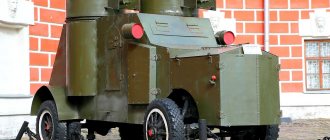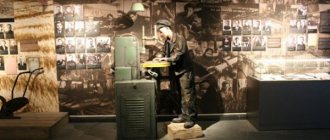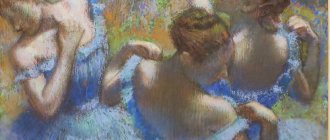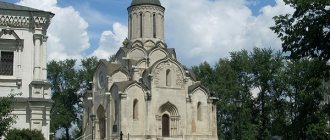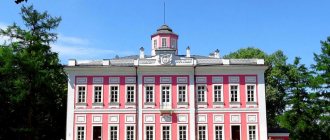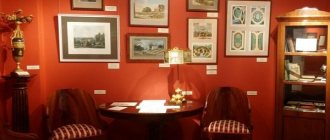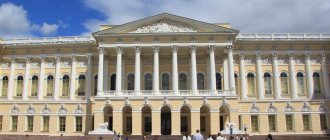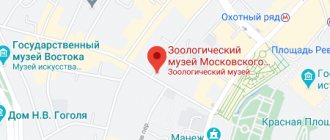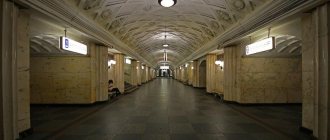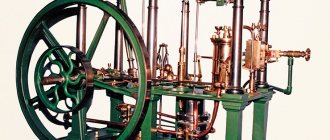The Metro Museum was created thanks to the efforts of enthusiasts from among the veterans of the Moscow metro, who organized the collection of exhibits from personal collections, outdated devices and mechanisms, and historical documents. The collection has the status of a folk museum and is free to visit, including with a guide. The exhibition is located at the existing Vystavochnaya metro station, in the premises of the Metro Vocational Guidance Center - the proximity is very useful for both collaborating parties.
History of creation
The idea of creating a museum has been in the air for many years. Zinaida Troitskaya , who held the position of deputy head of the Moscow Metro in the 60s, supported the veterans who proposed organizing a permanent exhibition.
Metro employees believed that learning more about the Moscow metro, seeing things that you don’t encounter in everyday life, would be interesting for Muscovites and guests of the capital.
They turned out to be right. Since the opening of the museum in 1967, its halls have always been filled with visitors. There were plenty of people who wanted to get to know the metro better.
Overview of exhibits
The collection was collected bit by bit. The first exhibits were brought by metro employees. Enthusiasts found documents, decommissioned equipment, instruments, photographs from various years, and film materials. They called for help from employees of the city archive, the state library named after. V.I. Lenin, employees of the metro administration.
Over time, the collection grew. Now the museum occupies several spacious halls.
And here is perhaps the most interesting thing:
- a real metro train cabin;
- current turnstile model;
- current escalator model;
- old style turnstile in working condition;
- real traffic lights;
- metro train models;
- a collection of caps for metro workers from other countries;
- a real section of railway track with a contact rail and a traffic light;
- large collection of tokens. There are metal and plastic tokens from Moscow and St. Petersburg;
- automatic machine for exchanging cut-out “piglets”;
- a unique collection of travel tickets. Tickets for 1935 have been preserved;
- a primitive adding machine.
In the 30-60s, tickets were sold that were valid for a certain time after purchase.
Visitors always look at train control panels with interest. The collection consists of several remote controls, ranging from the first manual control to modern automated systems. The latest working model of the control panel shows the real situation in the Moscow subway.
Moscow Metro Museum
Full name of the museum: “People's Museum of the Moscow Order of Lenin and the Order of the Red Banner of Labor of the Metro named after V.I. Lenin". The museum's exposition is located on the 2nd and 3rd floors of the southern lobby of the Moscow metro station "Sportivnaya".
After the first stage of the Moscow metro was opened, the idea of creating a museum appeared. A group of veterans proposed organizing a permanent exhibition. Zinaida Trotskaya, who at that time held the position of deputy head of the Moscow Metro, supported the veterans. The museum was created in 1967.
The initial exhibition included only documents about people associated with the metro. But gradually the funds and exposition were replenished with new interesting things. Enthusiasts began searching and selecting the museum’s exhibits: documentary materials, photographs, samples of various technical devices, etc.
The materials were shared by the State Archive of Film and Photo Documents, some items from the funds of which were transferred to the museum’s exhibition, the Metro Administration, the State Library named after V.I. Lenin. The exhibition included specimens of equipment. Individuals also took part in replenishing the list of exhibits, donating various documents and things to the institution.
The stairs have railings that used to be on escalators, a collection of old lamps, a cutaway model of an escalator and a full-depth section of a subway. Another original solution is the design of museum display cases in the form of Moscow metro car windows.
Individual exhibits provide insight into the large-scale construction work in Moscow in 1932. Not only photographs and documentary materials, but also the tools with which tunnels were dug at that time make it possible to get acquainted with that era. A separate large section of the museum is dedicated to the Great Patriotic War.
What's interestnig
There are unique collections of tokens (metal, plastic - not only Moscow ones) and travel tickets. In the collection of travel tickets you can see old copies (1935 ticket). Collection of caps for metro workers from other countries. A adding machine, pointer telephones, a cutaway view of a coin changing machine and many other interesting things.
There are model trains, models of turnstiles and escalators, real traffic lights, and an old-style turnstile that is in working condition. A section of railway track on which there is a contact rail and a traffic light.
A collection of remote controls designed to control the movement of trains: from manually operated devices to automated systems. And a real driver's cabin.
Address: 119048, Moscow, Khamovnichesky Val, 36. Sportivnaya metro station, southern lobby. Telephone
Impression
The museum makes a good impression. The exhibits are sorted by groups and years. Lots of real devices, working models.
There are video tours. You can “look” into the Minsk or St. Petersburg metro.
The inscriptions are clear and understandable. The abundance of well-preserved documents, paper and cardboard tickets from the 30s and 40s is amazing.
As in the Museum of the Armed Forces in Moscow, a large section is dedicated to the Great Patriotic War . Many photographs, posters, and newspaper clippings from the war years have been preserved.
It turns out that with the money collected by the employees, an armored train with the name “Moscow Metro” . During the war, repair shop workers produced mines for the front. Ammunition is also displayed under glass.
The museum is often visited by schoolchildren and students. Here you can find documents on the history of the metro and understand how instruments and mechanisms work. There’s more than enough for an essay or course material.
Like the Animation Museum in Moscow, photography is allowed here. The staff will answer all your questions.
I would like to believe that over time the museum will move to more spacious premises. It is worth adding more advertising to attract visitors. The entrance to the museum is inconspicuous . The sign has not been updated for several years. You won’t immediately guess that behind an ordinary door there are unique exhibits.
After visiting the museum, you will learn a lot of new things. But don't rush to go home right away. Take a look at the Moscow Museum of Retro Cars. Just like in the metro, you will be treated to an incredible excursion into the world of cars of the past. And then compare the Mercedes-Benz 50-xc with the current ones.
Well, if you are a sailor, then you will be interested in a submarine tour. Find out how at this address: https://rus-ekskurs.net/dostoprimechatelnosti/muzei/moskovskij-muzej-podvodnaya-lodka-v-parke-severnoe-tushino.html
Career Guidance Center and Museum Exhibitions
The professional guidance of future metro workers is more intelligible with the placement in the Center of the People's Metro Museum, which was closed for reconstruction and was previously located at Sportivnaya station. The excess of premises made it possible to place museum exhibitions without compromising clarity and division into thematic sections. The exhibits are placed along fairly long walls, on special shelves and in display cases. A rather old control desk with a cloth top was used not only as an independent exhibit - samples of old office equipment are displayed on it. This is a telephone with rotary dialing and direct call keys, a rare typewriter and other devices.
The Moscow metro still bears Lenin's name, and a bust of the former leader is on display along with traditional memorial banners for his success in labor. Naturally and correctly, stands are presented here about the labor dynasties of underground transport workers; there is nothing more tying to a certain profession than following the labor path of their ancestors. The exhibition is complemented by photographs of episodes of the presentation of commemorative banners, and a showcase with souvenirs donated for memorable dates.
Next to the described exhibition there is a display case with models of locomotives and entire train sets. Steam locomotives are presented as the historical predecessors of electric locomotives, and were indeed used in some of the world's metros before electrification. The Moscow metro was immediately focused on electric traction. Train sets were formed from locomotives and carriages, the design and appearance of which changed over time, sometimes significantly. These changes can be clearly observed at the stand.
The next exhibition of the Metro Museum shows archival photographs depicting episodes of the creation and operation of underground communication routes. Old black and white photographs preserved the appearance of metro stations of long ago, scenes of the most memorable events. Here are the old metro line layouts, which are strikingly different from the current state of the highways. A very noticeable exhibit is a model of the Moscow Metro armored train, the original of which was built with voluntary donations from workers in 1943.
Pages 1 of 3 1Next
Tags: Moscow holidays with children
Contacts, opening hours, prices
The museum is located at the address: Moscow, Khamovnichesky Val, 36. "Sportivnaya" metro station . The landmark is the high-rise building of the Yunost (Khamovnichesky Val, 34).
You can get to the museum by metro (get off at Sportivnaya station). From different parts of the capital you can get to Khamovnichesky Val by bus or trolleybus.
The bus stop “Ulitsa Khamovnicheskiy Val” is located 200 meters from the metro station. Routes No. 05, 015, 64, 132.
At 490 m there is a trolleybus stop “Luzhnetsky Proezd”. Trolleybus No. 15 runs.
I'm glad that admission to the museum is free . Phone number for consultations and booking a tour: +7 499 321-64-61 . The director of the museum is Konstantin Arkadievich Cherkassky.
